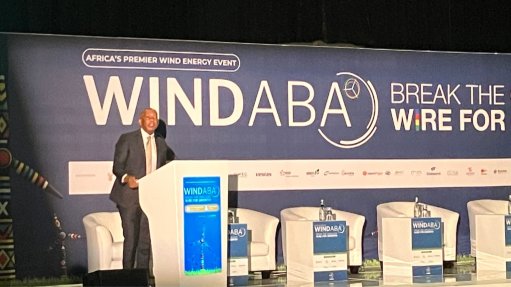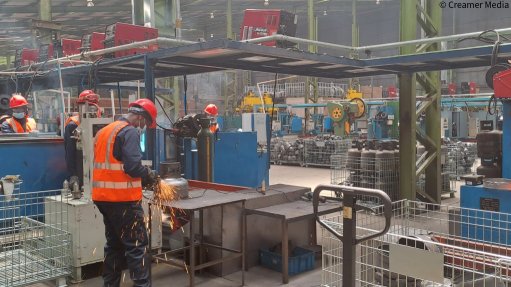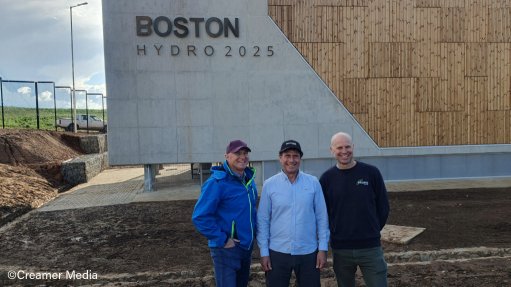GBCSA to launch home green rating system next year
The Green Building Council of South Africa (GBCSA) has motivated South Africans to get a certified green rating for their homes.
The council explains that the Green Home Rating System for existing buildings will look to shift South Africa’s homes to align with the United Nation’s Sustainable Development Goals and the South African National Development Plan by creating a common language on sustainability in homes.
This will incentivise change at a household level and through the supply chain, says the GBCSA.
The council notes that households in the country account for 27% of energy use and 44% of municipal waste generated. Additionally, households account for 60% of water and sanitation sales.
The GBCSA wants to help reduce the environmental footprint of every household. This bold ambition is viable considering the significant costs of energy, water and waste, and the cash savings available if these resources are used more efficiently.
The GBCSA will be the operator of a rating tool to this end. The launch date for the home measuring system has been set for 2021.
GAP IN THE MARKET
The GBCSA, with help from industry experts, has identified the sustainable living indicators of South African households. These are water efficiency and security; energy efficiency and security; recycling and waste reduction; fresh air; access to fresh food; comfortable temperatures; good daylight; responsible materials; transport; accessible communities; Internet accessibility; affordability; and access to nature and biodiversity.
The council says these indicators have been tested and, besides insight into households, the study results showed various factors that help or hinder sustainable living.
It then interrogated the market gap for a green home rating tool among the products and services supply chain and the real estate sector.
These informed the recommendations for the tool, including the requirement of making the rating process a personal one for individual households; the high priority South Africans place on health and wellbeing; and how sustainability indicators can address social challenges.
“Gathered data helped inform the current state and performance of local homes to both ensure alignment with targeted impact reduction goals in each sector and to identify best practice.
“Energy, water and waste have measurable baselines and benchmarks that can be used to track a home’s performance in these indicators. However, community and health-related indicators such as fresh air, food, comfortable temperatures, daylight, transport and walkability are less tangible to benchmark, but still important,” the GBCSA says.
The council points out that it became necessary to rate assets and performance separately and know exactly what should be measured, and how.
Instead of measuring litres per second of fresh air or luminosity levels of daylight, the team found that simplified survey-type questions can be drawn from best-practice standards to sufficiently assess the home.
TOOL SCOPING
Using these lessons, a framework was developed as the basis for the green home rating tool, and this informed a score sheet focusing on utilities, health and community to address three spheres within the household: behaviour; performance (measuring water, energy and waste); and asset improvements (such as insulation).
As it is likely that a formal certification may only be considered when a home is bought or sold, it became important to offer a “self-assess” option for those looking to understand and improve the sustainability of their home.
“By individually working through the score sheet and seeing areas where improvements can be achieved, households will learn how to better reduce their environmental footprint. To formally certify their home, individuals can ask an auditor to verify the claims made in the score sheet questionnaire,” the GBCSA notes.
The business case for the rating system is also important and it is suggested that a partner and co-branding networks are suitable to work with the GBCSA to make the required impact in the residential sector.
The marketable “green home” certificate is aimed primarily at the rental and ownership transaction stage of homes.
For both private and public sector stakeholders, a clear framework for sustainability in homes creates a common language and roadmap.
Planning, monitoring and forecasting is improved through access to data and trends from tens of thousands of households on performance, demand and uptake of sustainability in homes.
Further, the GBCSA says strong marketing opportunities exist with access to incentivised, aware householders as well as brand association opportunities.
Article Enquiry
Email Article
Save Article
To advertise email advertising@creamermedia.co.za or click here
Comments
Announcements
What's On
Subscribe to improve your user experience...
Option 1 (equivalent of R125 a month):
Receive a weekly copy of Creamer Media's Engineering News & Mining Weekly magazine
(print copy for those in South Africa and e-magazine for those outside of South Africa)
Receive daily email newsletters
Access to full search results
Access archive of magazine back copies
Access to Projects in Progress
Access to ONE Research Report of your choice in PDF format
Option 2 (equivalent of R375 a month):
All benefits from Option 1
PLUS
Access to Creamer Media's Research Channel Africa for ALL Research Reports, in PDF format, on various industrial and mining sectors
including Electricity; Water; Energy Transition; Hydrogen; Roads, Rail and Ports; Coal; Gold; Platinum; Battery Metals; etc.
Already a subscriber?
Forgotten your password?
Receive weekly copy of Creamer Media's Engineering News & Mining Weekly magazine (print copy for those in South Africa and e-magazine for those outside of South Africa)
➕
Recieve daily email newsletters
➕
Access to full search results
➕
Access archive of magazine back copies
➕
Access to Projects in Progress
➕
Access to ONE Research Report of your choice in PDF format
RESEARCH CHANNEL AFRICA
R4500 (equivalent of R375 a month)
SUBSCRIBEAll benefits from Option 1
➕
Access to Creamer Media's Research Channel Africa for ALL Research Reports on various industrial and mining sectors, in PDF format, including on:
Electricity
➕
Water
➕
Energy Transition
➕
Hydrogen
➕
Roads, Rail and Ports
➕
Coal
➕
Gold
➕
Platinum
➕
Battery Metals
➕
etc.
Receive all benefits from Option 1 or Option 2 delivered to numerous people at your company
➕
Multiple User names and Passwords for simultaneous log-ins
➕
Intranet integration access to all in your organisation


















